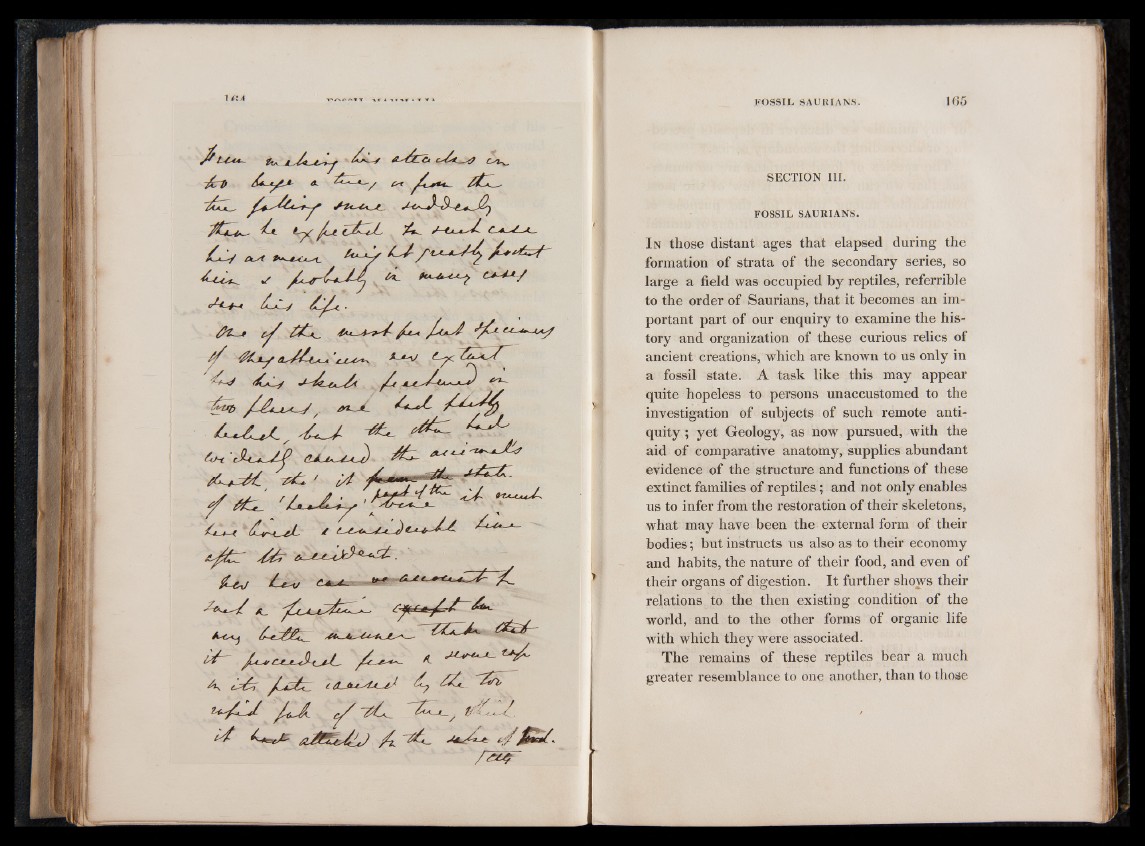
f t t-CAA~ '■ ft**—/ £ - ft c c * c s ty .
L v ft*-*^-*- a~ t x f t t f t
ft*.ZL ^C ^ftS-gx-^^
^U<- ft*- / t t f t x L /—t*-*ft~ Cx—/-*<_
4 ^ A iw / i f t y 't^ ju L fty
L e f t *s f t ^ - f t e f t f t K & - * * ^ < ^ e f t * /
f t f t / f t f t < . _
^ 2 _# ^ft~*— f t x ^ C * f t c-f-x—u x * /
j f t < 0 /j- y O x / f t t x A *~*M . * - y c L f t t f t
f t - j < L * ft fftt JLjtxft-t*x-*-ft /*—
ftftb / f t* -U x f t ^ f t - x f t
t o ^ 'J f t j f t e U u ^ / ) ftft^
f t + f t L / f t . 7 l / t ^
/ L L x _ r /-a . *f t L x y *
L x —t ' ft x r - e f t- ‘
o / f t f t f t f
0 f t / L e x / ^ 'J b i i l iw tntm^A m
^&-*-ft A_ / c u f t f t f t x -
ftx x r C e j f t L - l L AA
. Z f t f / j f t c C / L A e xU ft fty L f t f t Z T
SECTION III.
FOSSIL SAURIANS.
I n those distant ages that elapsed during the
formation of strata of the secondary series, so
large a field was occupied by reptiles, referrible
to the order of Saurians, that it becomes an important
part of our enquiry to examine the history
and organization of these curious relics of
ancient creations, which are known to us only in
a fossil state. A task like this may appear
quite hopeless to persons unaccustomed to the
investigation of subjects of such remote antiquity;
yet Geology, as now pursued, with the
aid of comparative anatomy, supplies abundant
evidence of the structure and functions of these
extinct families of reptiles; and not only enables
us to infer from the restoration of their skeletons,
what may have been the external form of their
bodies; but instructs us also as to their economy
and habits, the nature of their food, and even of
their organs of digestion. It further shows their
relations to the then existing condition of the
world, and to the other forms of organic life
with which they were associated.
The remains of these reptiles bear a much
greater resemblance to one another, than to those